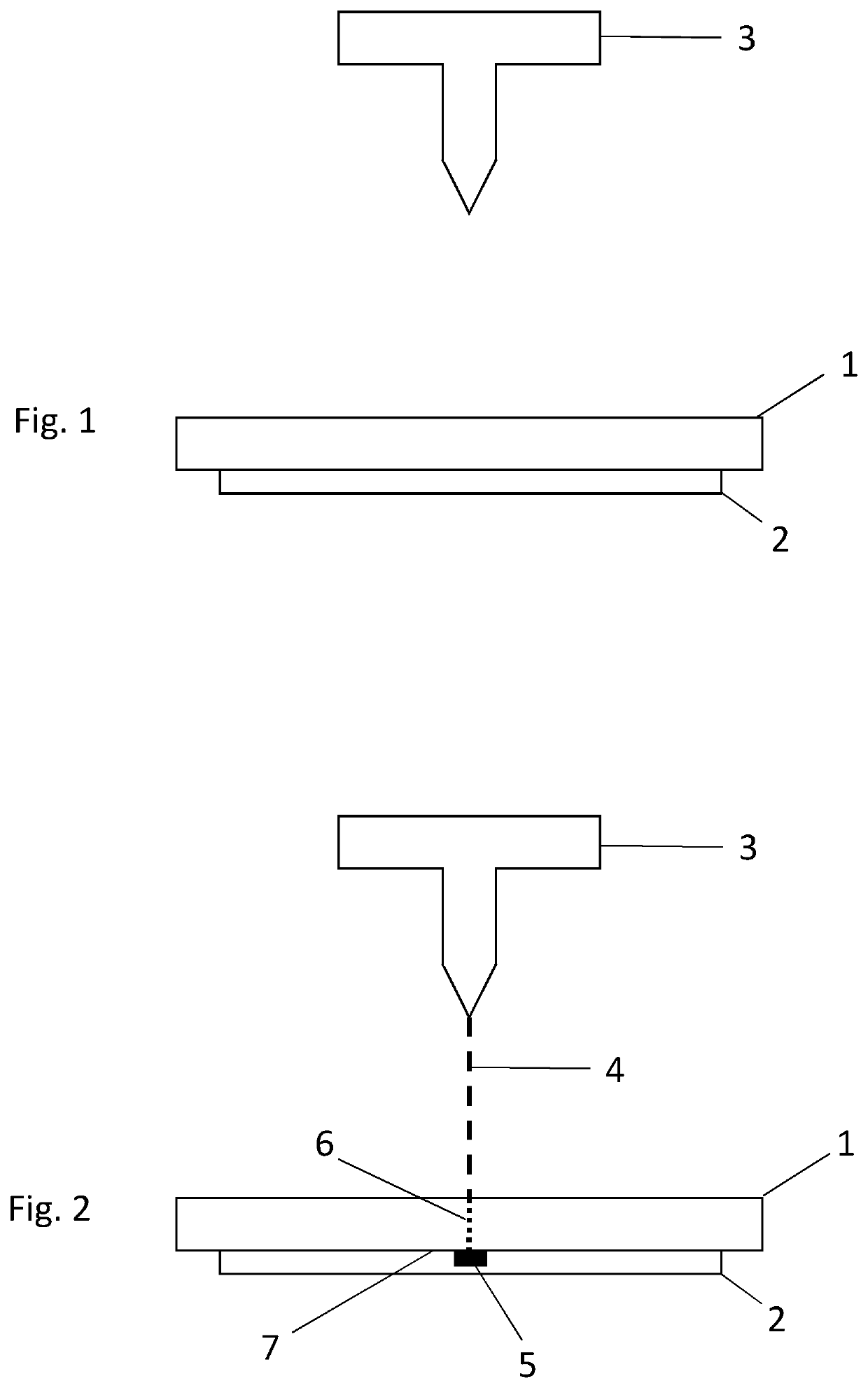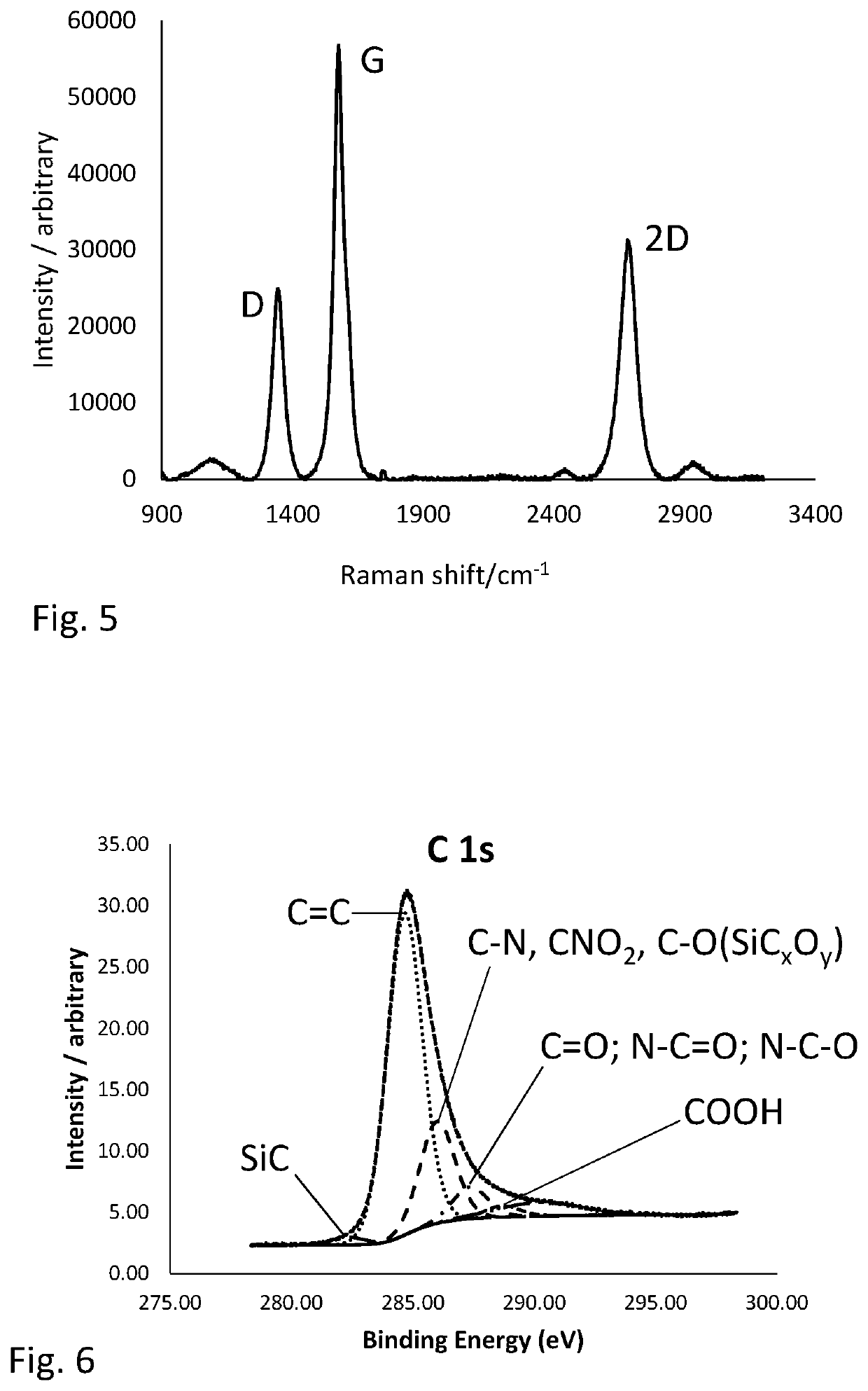3D graphene
- Summary
- Abstract
- Description
- Claims
- Application Information
AI Technical Summary
Benefits of technology
Problems solved by technology
Method used
Image
Examples
first example embodiment
[0093]3D graphene was deposited on and adhered to a silicon substrate by the method set out below and as illustrated in FIGS. 1 to 4. A 600 μm thick silicon substrate 1 was placed directly on top of a 120 μm thick polyimide film, as shown in FIG. 1.
[0094]A CO2 infrared pulsed laser engraving and cutting system (the Trotec Speedy 400 flexx) 3 was used to direct a laser beam 4 at a surface of the substrate facing away from the polyimide film, as shown in FIG. 2. The laser system was tuned to emit light at a wavelength of 10.6 μm, with a beam size of 50 μm, a pulse duration of 14 μs and a power of 14.14 W. The laser beam was scanned across the surface of the substrate at a scan rate of 284 mm / s. The process was carried out at room temperature and at atmospheric pressure.
[0095]As shown in FIG. 2, a portion 5 of the polyimide film, immediately adjacent to the region of the substrate at which the laser beam was directed, was converted into 3D graphene. Without intending to be bound by the...
second example embodiment
[0104]3D graphene was deposited on and adhered to a polystyrene substrate by the method set out below and as illustrated in FIGS. 7 to 10. A 25 μm thick polyimide film 8 was placed directly on top of a 600 μm thick polystyrene substrate 9, as shown in FIG. 7.
[0105]A CO2 infrared pulsed laser engraving and cutting system (the Trotec Speedy 400 flexx) 10 was used to direct a laser beam 11 at a surface of the polyimide film 8 facing away from the substrate 9, as shown in FIG. 8. The laser system was tuned to emit light at a wavelength of 10.6 μm, with a beam size of 50 μm, a pulse duration of 14 μs and a power of 6 W. The laser beam was scanned across the surface of the substrate at a scan rate of 87.5 mm / s. The process was carried out at room temperature and at atmospheric pressure.
[0106]As shown in FIG. 8, a portion 12 of the polyimide film, at which the laser beam was directed, was converted into 3D graphene. The full thickness of the polyimide film was converted into 3D graphene.
[0...
PUM
 Login to View More
Login to View More Abstract
Description
Claims
Application Information
 Login to View More
Login to View More - R&D
- Intellectual Property
- Life Sciences
- Materials
- Tech Scout
- Unparalleled Data Quality
- Higher Quality Content
- 60% Fewer Hallucinations
Browse by: Latest US Patents, China's latest patents, Technical Efficacy Thesaurus, Application Domain, Technology Topic, Popular Technical Reports.
© 2025 PatSnap. All rights reserved.Legal|Privacy policy|Modern Slavery Act Transparency Statement|Sitemap|About US| Contact US: help@patsnap.com



